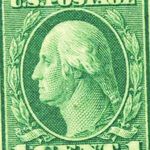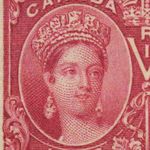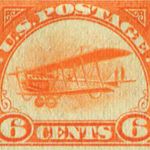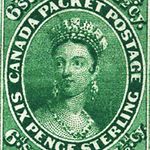Th e Civil War Post - Trish Kaufmann
←
→
Page content transcription
If your browser does not render page correctly, please read the page content below
The Civil War Post
Patricia A. Kaufmann
How Do Postal Artifacts
Find Their Way Into the Collector Market?
A
ll postal history collectors are handling mail that – at one time – belonged to someone’s family. Theoretically, all postage
stamps originated through the post office. So, how does such material get into the hands of collectors?.
With the proliferation of the Internet, more people are finding great-great Uncle Homer’s mail offered for sale to
collectors, usually while they are researching family genealogy. This is often a shocking revelation to descendants. Some people
demand to know where dealers or collectors came by what they consider personal family treasures. But, undoubtedly, earlier
family members either did not see them in the same way or died without instructions to pass such items on to their heirs.
To most collectors, it is fairly routine made a windfall when writing to those postmas-
knowledge how such postal collectibles come ters – “O, those old things [paraphrased], I’ll give
to market. Others have never given it a second them to you for nothing.” At the least, he found
thought. This article provides but a few examples out about production details directly from local
of how material gets into collector hands. stamp creators. Dietz was a professional printer,
publisher and philatelic student, as well as a
Newspaper Ads and Direct Mail
part-time stamp dealer.
In my area of specialization, most enve-
We are indebted to many of the early stamp
lopes originate as far back as the mid and late
dealers of the nascent era who sought out these
1800s, not long after the American Civil War. Figure 1. One of two rare
Livingston, Ala., 5¢ blue rare treasures and carefully documented their
Stamp collecting was in its infancy and many
provisionals (Scott 51X1) used acquisitions, ascertaining as much as possible
people were looking to add to their embryonic on one cover, found in 1869 by directly from those who created the prizes we
collections. a Southern railroad employee
in a file of old letters. so cherish today. While these searches were
Some stamp dealers and collectors ran ads certainly in their monetary interest, they are
in local newspapers looking for specific items, whether stamps also most certainly to our great benefit today.
only or envelopes and letters. Direct mail solicitations continue
Many new rarities were announced in the philatelic press of
to come to me today, announcing “our stamp buyer is in your the day. The Livingston, Ala., 5¢ blue (Scott 51X1), illustrated
area this month.” Dealers can’t sell if they can’t buy. I have run in Figure 1, was one of two used, on one cover. The cover was
such ads and sent direct-mail solicitations in the past myself. first found in 1869 by a Southern railroad employee in a file
Dr. James A. Petrie (1843-1913), one of America’s early of old letters. News of the discovery was first reported in the
philatelic fakers, traveled across the South in the 1870s plac- American Stamp Mercury on page 110 of volume 3 (1869) and,
ing newspaper ads that offered high prices for old Confeder- later, by the legendary John Walter Scott in the June and July
ate stamps. He also wrote directly to Southern postmasters, 1869 editions of the American Journal of Philately. The two
inquiring about their creations. The Petrie ads frequently stamps have passed down through countless legendary stamp
illustrated items that were nonexistent. His so-called finds collections since then. Most recently, this example – one of
were often counterfeits or fantasies prepared and sold to those only 11 recorded either on or off cover – sold in the collec-
who were easy prey in early days of collecting. He particularly tion of the late Dr. Ralph Brandon in 2014. It is pictured here
targeted wealthy Europeans, such as Tapling and Ferrari, the courtesy of Siegel Auction Galleries, which sold the Brandon
two most prominent collectors of the period. Sometimes Petrie collections.
hit the proverbial jackpot and found genuine philatelic rarities, Tiptoeing Through the Teepees
then based his forgeries on these rarities. His creations still The late Judge Harry J. Lemley (1883-1965) was a federal
plague collectors. judge on the United States District Court for the Eastern and
August Dietz, acknowledged as the “Father of Confederate Western Districts of Arkansas, appointed by President Frank-
Philately,” also wrote directly to Southern postmasters shortly lin Roosevelt. I worked with his son, Col. Kenneth McRae
after the war in his quest for rare provisional stamps. He often Lemley, both on the sale of his father’s collection by Kaufmann
48 • The American Stamp Collector & Dealer • April 2021Auctions in October 1977, and as co-author
of the Arkansas section of the 1986 New
Dietz Catalog. “Mac” Lemley, as he preferred
to be called, used to tell me stories of his
father literally going into the teepees of
Arkansas Native Americans.
Judge Lemley attained national recogni-
tion as an authority on Native Americans,
confining his research to Arkansas, where
he conducted a systematic study of their life
and customs, searching for artifacts in the
mounds and village sites along rivers and
streams. Major portions of this collection
were – and perhaps still are – on display in
Tulsa, Okla.
In his articles, Judge Lemley placed Figure 2. One of the two recorded covers mailed from a post office within the Confederate
Military Department of Indian Territory, found by Judge Harry J. Lemley while scouring for
emphasis on people and events, rather than
postal artifacts in Native American villages in Arkansas.
only philately. Perhaps I first found my love
of intertwining social and postal history from reading his Stamp Collecting Physician’s Patient
material. Kaufmann Auctions reprinted all of his many articles Shown in Figure 3, the only recorded 3¢ 1861 Madison
from the Confederate Philatelist at the end of the auction cata- C.H., Fla., postmaster’s provisional used on cover, found its
log of his phenomenal collection. It remains one of the most way into the philatelic stream via a collecting doctor.
memorable and unusual assemblages I ever had the privilege of Dr. Gaius Marcus Brumbaugh was physician to Fanny
handling. Corbin Thompson (1819-96), wife of the cover’s addressee. Dr.
Shown in Figure 2 is a folded letter from the Lemley collec- Brumbaugh’s signature is on her death certificate, a validated
tion with a manuscript Choctaw Nation postmark “Luk fah copy of which I still preserve.
tah C.N. April 4th/62” and “Paid 5” Confederate rate from an A first-hand account of the discovery was related by Dr.
assistant to the colonel at Luk Fah Tah to Col. Peter P. Pitch- Brumbaugh in his letter to H.F. Albrecht & Co. in New York, as
lynn at Eagletown. The letter concerns a request for payment printed in The Postage Stamp (Fred J. Melville, London). Brum-
of expenses related to Confederate regiments under Col. Pitch- baugh related that he asked Mrs. Thompson to scour her old
lynn’s and Captain Washington Hudson’s commands. It is one wartime correspondences, as he was a stamp collector. Thus,
of the two recorded covers mailed from a post office within he acquired the cover and letter (of which only the dateline
the Confederate Military Department of Indian Territory, this was retained, to keep the contents confidential) in 1895.
being the only reported cover bearing a town name.
I personally knew Brumbaugh’s heirs,
who were stamp collectors and Kaufmann
clients. Kaufmann Auctions sold a family
collection for one of them who was still
lamenting – years after the fact – the family
sale of the only recorded 3¢ Madison provi-
sional on cover.
Dumpster Diving
With unfortunate regularity, indifferent
family members leave piles of correspon-
dence and other treasures on the trash
heap, in dumpsters and at curbside for trash
pickup. Many dumpsters, such as the one
shown in Figure 4, have been the recipients
of unknown treasure.
I have personally witnessed all such
Figure 3. The only recorded 3¢ 1861 Madison C.H., Fla., postmaster’s provisional used on cover examples and written about them in these
found its way into postal historians’ hands via a collecting doctor who asked a patient to look
through her wartime correspondence for items he could add to his collection. and other pages. Sometimes a collector, or
April 2021 • The American Stamp Collector & Dealer • 494.
Figure 4. All too often, rare
documents, covers and even
entire stamp and cover collections
make their way into dumpsters,
never to be seen again.
Occasionally, forward-thinking
collectors luck out.
a junk dealer simply looking
for monetary value, salvages
postal treasures. And, some-
times, these items are lost to
philately and to history for
all time.
I was involved with a
major collection a number
of years ago that was thrown
out in the trash. The collector
literally had warehouses full
of material worth millions of
dollars and stacked to the ceil-
little bit of material the couple had rescued – a $20,000 cover
ings. These items were acquired over a lifetime of collecting.
here, a $10,000 stamp there (for individual items) –I went
His son hired college students to sort the veritable mountain of
directly to the family, not having any idea what happened.
material, as if young students would have any idea whatsoever
The family’s attorney contacted me and put a legal stop to the
what it was worth. They threw out rare documents and, yes,
lamentable ransacking. Several years later I was contacted to
the very rarest of stamps and covers. They even threw out gold
help properly sort and sell it after the collector died. It was an
coins! They had no idea that the pencil notes on the auction
astounding experience in every way.
lot cards represented bidder numbers and five and six-figure
prices paid. This is but one example. Sometimes philatelic trash comes
from public buildings, discarded county or state records and
The acquiring collector was still alive at the time, although
so forth. I am aware of several such instances which have
quite elderly and in ill health. He had no knowledge this was
produced priceless philatelic treasures.
going on. It is unfortunate he was a wealthy hoarder. Nothing
was arranged on exhibit pages nor mounted in albums. All Furnace Find:
purchases were unorganized and on original dealer stock or the Dawson Hawaiian Missionary Cover
auction lot pages. Some were from the previously mentioned The most famous of all Hawaiian and the United States
Judge Harry J. Lemley collection. covers, the rare Dawson cover, shown in Figure 5 (courtesy of
I have no charitable words for the son, who was responsible Robert A. Siegel Auctions) is universally ranked among the
for the destruction of not only his father's cherished collect- world's most important philatelic items. It bears two different
ibles but, foolishly, his own inheritance. He consulted no phil- denominations of Hawaiian missionary stamps. It is known
atelic professional, rather leaving it to unknowledgeable youth as the Dawson cover because it was addressed by William C.
to sort. Fortunately, his prized gold coin collection, worth Dawson to his sister, Eliza Ann.
seven figures, was stored in multiple bank safe deposit boxes Around 1870, occupants of an abandoned building left
throughout the city. half-burned old papers and records in a furnace in the stove’s
Nearby neighbors asked if they could go through the belly. The workman given the job of cleaning out the boiler
discarded material in multiple dumpsters and take what they 35 years later knew something about stamps and became
wanted. They were given permission. Fortunately for me, some intrigued by the presence of unfolded letters and envelopes
of these rarities were on original auction pages with prices scattered among the charred papers. Tightly bound, the rare
realized written on them. Many of those auction pages were Dawson cover escaped with nothing more than a faint singe at
Kaufmann Auction lot pages, thus I received a phone call that left where the lettersheet was licked by the flames. That singed
shook me to the core. I was not prepared for what I saw when I cover last sold for more than $2 million.
flew to see the enormous mountain of recovered “trash.” Historical Societies
Who knows what was lost for all time, but what was still Last year, I sold a Confederate cover that had a faint pencil
there turned out to be millions of dollars-worth of material – marking in the corner on the front. This turned out to be an
literally enough to fill multiple warehouses. After seeing just a accession inventory number. The collector who bought it from
50 • The American Stamp Collector & Dealer • April 2021me was an attorney doing research on the
correspondence and happened to find it
pictured online in a Southern historical
society – clearly the very item with the
same accession number. Eek!
Obviously, that revelation was rather
stomach churning. The dealer who sold it
to me was similarly shocked. I know him
well and he was selling it for the estate
of someone we both knew personally.
Neither of us believed this could possibly
have been stolen. Fortunately, our faith in
him was well founded.
Upon inquiry, the director of the
historical society library said it had
acquired a collection of papers of which
this cover was a part. The well-respected Figure 5. The rare Dawson cover is the most famous of all Hawaiian and United States covers; it
was part of discarded mail, saved from incineration in 1870.
elderly collector, who often went to
the library to do research or take them The penciled June 8, 1862, six-page letter reads, in part:
a collection to examine, was interested in the item for his I take this chance to write you a few lines by Mr. Jenkins,
personal collection. The director stated in a sworn affidavit if he can get home safe. He is the man who brings letters to us
that, “As we did on occasion, we photocopied this cover for … He told me that he would carry this letter to Lottsburg. You
the (historical society) collection and gave the original to the can get it when he calls for it … This man Jenkins charges 25¢
stated collector” (name withheld by author). The collector was a piece every letter that he brings or carries so I told him that
well known in both collector and local communities; he had if he would carry this letter to you and bring an answer that
donated countless items to this and other state historical soci- I would give him a half dollar and he said he would do so by
eties for decades. this means.
Sold by Descendants The correspondence was sold by an elderly family member
The most common means of material getting into the almost a decade ago. This family correspondence was acquired
collector market stream is via relatives who care nothing more than 1,000 miles from where it originated, and more
about great-great Uncle Homer’s old mail. They may keep than 150 years after the Confederate soldier wrote to his wife.
the letters and sell the envelopes, once they realize there may Without the letter, the cover would have been much more of a
be monetary value to them. Sometimes we are lucky enough conundrum.
to get the letters too. Frequently, such
letters help prove some philatelic
aspect of the cover.
Last year, I announced the find of
a newly recorded private express mail
service. No Civil War express company
mail in the region of the Chesapeake
Bay had been identified and recorded
until then, although delivery of mail is
known to have existed in the area along
the Union-patrolled river borders.
At the upper-right corner of one
cover is manuscript “Paid 25” and
at lower left “Per Mr. Jenkins.” To a
serious student of Confederate postal
history, the 25¢ rate immediately reso-
nates as something unusual. That cover
is shown in Figure 6. Figure 6. One of only two recorded Confederate Jenkins Express covers from the Chesapeake Bay
region; it came onto the market only a decade ago from an elderly family member.
April 2021 • The American Stamp Collector & Dealer • 51Social Connections
Stamp collectors are, at heart, story collectors and
history lovers. Postal artifacts are about how people
are connected. Covers provide the most likely avenue
to a great story but, often times, off-cover stamps
come with riveting stories too.
Two examples of widely-known stamps and their
histories are the U.S. 24¢ Inverted Jenny and the Brit-
ish Guiana Penny Magenta. The Jenny is the most
well-known of inverts in American philately, while the
unique Penny Magenta holds the record for the most
money paid for a postage stamp at nearly $10 million,
last sold in 2014; it is currently on display at the
Smithsonian National Postal Museum, and will once
again hit the auction block this year on June 8.
The only-known sheet of the Inverted Jenny was Figure 7. Kiloware is defined as packages, or mixtures, of postage stamps sold to
collectors by the weight rather than by quantity.
purchased directly from a Washington, D.C., post
office window in 1918; it was immediately recog- Are All Discarded Items Treasures?
nized as a printing error by the fortunate stamp collector who Not all philatelic trash is valuable. Likely not a week goes
purchased it. The stamps show the biplane flying upside down. by when I don’t tell someone that what they have are either
The Penny Magenta was discovered by a 12-year-old Scot- outright fakes or kiloware. If you are not familiar with the
tish schoolboy in his uncle’s basement in 1873. term, kiloware is defined as packages of postage stamps sold to
Both of these stories have been widely told in the general collectors by the weight, rather than by the quantity, often in
press and have been the topic of endless articles, television kilograms, hence the name. Kiloware usually consists of used
coverage and books. stamps on paper from clipped mail, as seen in Figure 7.
However postal artifacts legitimately make their way into
Find the rare gem collector hands, we are very glad they do! They enrich our lives
among more than and add to our social and historical records.
~~~
80 million collectibles! Patricia (Trish) Kaufmann was first introduced to
Confederate philately in 1965, became active in organized
philately in 1969 and became a full-time dealer in 1973.
Trish enjoys hearing from readers and may be reached at
trishkauf@comcast.net.
Please use stamps
on mail to others
whenever possible.
Advertise Where You
Get the Most Visibility
The collectors’ marketplace
In Print & Online
with the ASDA
www.delcampe.net
52 • The American Stamp Collector & Dealer • April 2021
PUB_EN_quart_AmericanStampDealer_93x124_2020.indd 1 27-07-20 14:24:47You can also read



























































